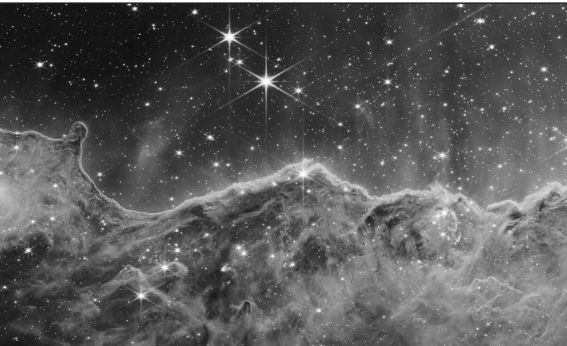With rapidly improving technology, space organizations like NASA have been making discoveries more often than ever. With NASA’s recent James Webb Space Telescope, new findings are being reported daily, like Sagittarius B2, a new moon orbiting Uranus, and many others.
New stars have been forming in the Milky Way Galaxy, and thanks to the new telescope, we can discover more and more of them every day. One structure that is being explored recently is Sagittarius. Sagittarius is the largest molecular cloud that is forming in the Milky Way Galaxy at the moment. One of the most interesting parts of this cloud is its dark portions. These seemingly dark, empty pockets are actually filled with gas that is so dense that even the Webb Telescope can’t see through it. To bypass this issue, scientists experimented with different devices they could use to possibly find what mysteries were lying behind this strange gas. After some time, they concluded that two different forms of technology could be added to the Webb Telescope. This would enable the telescope to see behind the gases of Sagittarius. When the scientists finally used these devices, the results were beautiful: a colorful array of stars that no one would be able to guess were behind these dark, mysterious gases. Although NASA scientists discovered what Sagittarius was hiding, they still don’t know why Sagittarius contains 50% of the galaxy’s stars while only having 10% of the galactic center’s gas.
Following this breakthrough, the James Webb Telescope went on to make another remarkable discovery, one much closer to home, a brand new moon orbiting Uranus. “On February 2, 2025, the Webb Telescope’s Near-Infrared Camera recorded an object creating a series of ten 40-minute-long exposure images,” said Maryame El Moutamid, during a study on Uranus’ ring and smaller inner moons. Scientists were able to determine that this new moon, temporarily named S/2025 U1, orbits the planet’s equatorial plane circularly. S/2025 U1 is only around 6 miles in diameter and orbits between the moons Ophelia and Bianca. Because it is so small, other telescopes and spacecraft such as the Hubble Telescope and Voyager 2 weren’t able to spot it as they lacked the sensitivity and technology to detect the reflection of such a small object. Astronomers say that this discovery offers new evidence about Uranus’s chaotic past. This new moon is located near the planet’s ring system, leading scientists to believe that it was formed after past collisions and breakups, indicating that Uranus’s system has not been entirely calm.
NASA’s discoveries reveal the significant progress we have made in exploring the universe, but they also underscore the vast areas of knowledge we still lack. From mysterious molecular clouds to hidden moons, every new finding teaches us more about how space works and inspires the next generation of scientists, engineers, and explorers.
